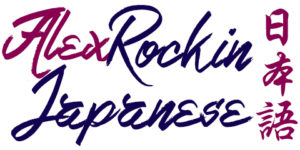| ない | 無い | is/are not… is nonexistent does not exist (negative form) | nai |
ない (nai) is the negative form of the verb ある (aru).
| スマホがある。 すまほ が ある。 Sumaho ga aru. | スマホがない。 すまほ が ない。 Sumaho ga nai |
| Smartphone exists. There is a smartphone. | Smartphone (is) nonexistent. There isn’t a smartphone. There is no smartphone. |
| リンゴを食べる。 りんご を たべる。 Ringo wo (o) taberu. | リンゴを食べない。 りんご を たべない。 Ringo wo (o) tabenai. |
| (I) eat apples. | (I) don’t eat apples. |
| 高い。 たかい。 Takai. | 高くない。 たかくない。 Takakunai. |
| (It) is expensive. | (It) isn’t expensive. |
The end of a verb determines everything. So once ない is attached the verb becomes an i-adjective.
| Verbs a-stem + ない | i-adjectives くない | Nouns & Na-Adjectives ではない じゃない |
|---|---|---|
| う→わ: 言う – 言わない く→か: 行く – 行かない す→さ: 出す – 出さない つ→た: 持つ – 持たない ぬ→な: 死ぬ – 死なない ぶ→ば: 呼ぶ – 呼ばない む→ま: 飲む – 飲まない る→ら: 取る – 取らない | 高い – 高くない 遠い – 遠くない 大きい – 大きくない 小さい – 小さくない 良い – 良くない 短い – 短くない | スマホだ – スマホではない スマホだ – スマホじゃない 車だ – くるまではない 車だ – くるまじゃない 綺麗だ – 綺麗ではない 綺麗だ – 綺麗じゃない 素敵だ – 素敵ではない 素敵だ – 素敵じゃない |
Negative form of i-Adjectives
How to make the negative form of i-adjectives:
Replace the last い with く and attach ない.
(or: remove い and attach 〜くない)
良い (いい、よい) – 良くない (よくない)
高い (たかい) – 高くない (たかくない)
大きい (おおきい) – 大きくない (おおきくない)
無い: ない is actually a bit special because it is the negative form of the Japanese verb ある (有る) which means “to be, to live, to exist“. In Japanese, all verbs turn into adjectives when you negate them.
無い、ない is an i-adjective and the negative form of the Japanese verb ある (有る). It also functions as a helper verb (〜ない) and is attached to all verbs to negate them.
Negative form of Verbs
How to make the negative form of verbs:
Godan verbs: Change the last syllable to the corresponding あ-row syllable and attach 〜ない.
(Exception: う changes to わ not just あ)
う→わ: 言う – 言わない (いわない)
く→か: 行く – 行かない (いかない)
す→さ: 出す – 出さない (ださない)
つ→た: 持つ – 持たない (もたない)
ぬ→な: 死ぬ – 死なない (しなない)
ぶ→ば: 呼ぶ – 呼ばない (よばない)
む→ま: 飲む – 飲まない (のまない)
る→ら: 取る – 取らない (とらない)
Ichidan verbs (most iru, eru): remove the last syllable and attach 〜ない.
食べる – 食べない (たべない)
見る – 見ない (みない)
Irregular verbs:
する – しない
来る – 来ない (こない)
Attaching ない turns the verb in an i-adjective and all further conjugations are based on i-adjectives.
| ある 在る aru | ない 無い nai | なかった 無かった nakatta | なくて 無くて nakute |
| 食べる たべる taberu | 食べない たべない tabenai | 食べなかった たべなかった tabenakatta | 食べなくて たべなくて tabenakute |
| 見る みる miru | 見ない みない minai | 見なかった みなかった minakatta | 見なくて みなくて minakute |
Negative form of Nouns and Na-Adjectives
The だ after the noun and na-adjective transforms into te-form mode and becomes で (de) and は (ha/wa) is added.
In informal Japanese では (deha/dewa) is shortened to じゃ (ja).
| これはスマホだ。 Kore ha (wa) sumaho da. |
| As for this, (this/it) is a smartphone. This is a smartphone. |
| これはスマホではない。 Kore ha (wa) sumaho de ha (wa) nai. これはスマホじゃない。 Kore ha (wa) sumaho ja nai. |
| As for this, (this/it) isn’t a smartphone. This isn’t a smartphone. |
| これは綺麗だ。 Kore ha (wa) kirei da. |
| As for this, (this/it) is beautiful. This is beautiful. |
| これは綺麗ではない。 Kore ha (wa) kirei de ha (wa) nai. これは綺麗じゃない。 Kore ha (wa) kirei ja nai. |
| As for this, (this/it) isn’t beautiful. This isn’t beautiful. |

